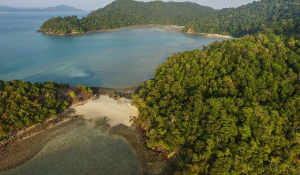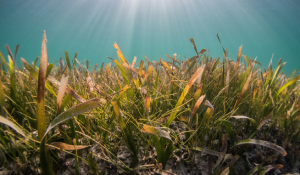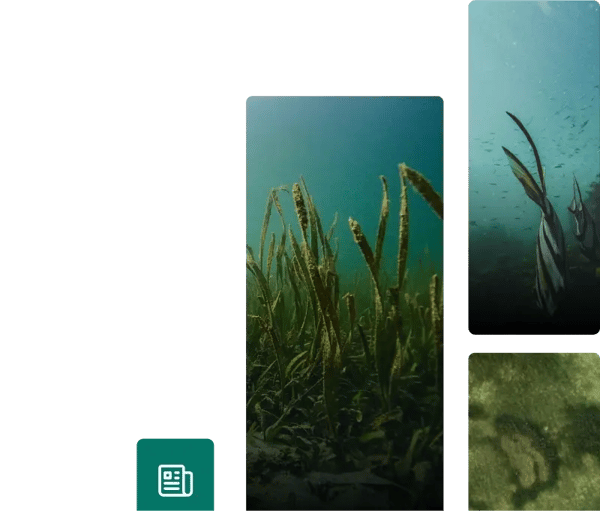Mexico Visit: 3 Ecosystems, 12 Communities & 10 Days
Since 2020, ClimateSeed has collaborated closely with several different project developers in Mexico, with projects certified under Climate Action Reserve (CAR) following the Mexico Forest Protocol. CAR states that “the Mexico Forest Protocol provides standardized guidance for carbon enhancement projects and addresses eligibility, baseline, inventory, permanence, social and environmental safeguards, and measurement, reporting and verification (MRV) requirements.”
Beyond the environnemental and social robustness that underlies the Mexico Forest Protocol, ClimateSeed highly values the protocol for being well-suited to the rules, regulations, and land tenure laws of Mexico, where most registered projects are on communally owned land known as Ejidos. These Ejidos account for around 70% of the forests and jungles in the country.
In April 2024, Alessandra Souroujon, ClimateSeed’s Carbon Project Manager for the Americas, visited 12 communities in various locations, including the State of Mexico, Tabasco, Campeche, and Quintana Roo where ecosystems included mangroves, oyamel, and jungle forests. Let’s take a walk through these ten days together. Alessandra will outline each leg of her journey, so take this opportunity to learn more about the various communities throughout Mexico, the positive benefits associated with biodiversity, and the community-work.

1st Stop: Tabasco, Mexico
April 15th to 17th
The first visits started with two mangrove communities in Tabasco, Mexico, where ClimateSeed is financing the implementation of two Blue Carbon projects. The first community covers an area of 416 hectares of mangroves and includes 89 community members (49 of which are women), while the second one is 736 hectares of mangrove and includes 42 community members (2 of which are women). Both project's goals are to preserve, conserve, and restore the mangrove forests and their local biodiversity and fight threats like land-use change, illegal deforestation, and fires.
Since project implementation in September 2023, some of the work that has been carried out includes defining project areas, community capacity building activities as well as baseline estimation through site samplings. A number of species are found such as fish, eagles, ducks, lizards, crabs, snakes, butterflies, icotea turtles as well as migratory birds, such as the kingfishers and herons. The projects are owned and led by the local communities, employing its youth, men, and women equally, and will share the revenues with community members to have a positive impact on the local economy.
2nd Stop: State of Mexico, Monarch Butterfly Biosphere
April 18th to 19th
From mangroves in the Gulf of Mexico, the visit continued with four communities in the State of Mexico, specifically located in the Monarch Butterfly Biosphere. The region is a temporary home to the migratory species of the Monarch butterflies (protected species) from November to March. They usually travel between 2,000 to 45,000 kilometers from the Northeast United States and Southeast Canada to this central region of Mexico, where they will hibernate during the winter months before traveling back. Protecting this habitat is crucial to preserve and protect them, as well as, the local biodiversity. Additionally home to, species including; rattlesnake, caltrops, coyotes, armadillo, raccoon, eagles, falcon, owl and critically endangered species, such as axolotls.
All four communities carry out improved forest management practices in their oyamel and pine forests, where wood harvesting is only authorized from April to October, as the Monarch butterfly is present during the other months. All four communities carry out harvesting activities that have been certified by FSC. Additionally, community forest activities include fire prevention with the implementation and maintenance of firebreak gaps and surveillance, pruning, weeding, as well as, reforestation, where both women and men participate.
Loyal to traditional practices, this project is different from other improved forest management projects communities use traditional small-scale harvesting methods, such as a yoke (a wooden beam) placed across the necks of a pair of oxen to carry the harvested wood down the mountaintop. This traditional use of the yoke allows for hauling heavy loads for relatively short distances.
The project area is home to the Mazahuas Indigenous community. They maintain their unique traditions and customs, and communicate in their native language. The term 'Mazahua' originates from the Náhuatl word meaning people from the deer.
The carbon project, San Jose del Rincón, was implemented in March 2021 and aggregates 5 communities with a total of 4,839 hectares of project area.
3rd Stop: Campeche and Quintana Roo, Mexico
April 22nd to 26th
Alessandra spent the last five days in Mexico’s Southeast region, specifically in Campeche and Quintana Roo. The first three visits included restoration projects and the last three, improved forest management. The region’s ecosystem is known for its jungles and tropical forests, home to both endangered and threatened nature species such as spider monkey, puma, and jaguar. Notably, in one community, the Baird’s tapir is often seen at local water reservoirs (the “Aguada”), drinking and cooling down. These long-nosed mammals, weighing up to 300 kg, are the largest mammal native to Central America. The International Union for Conservation of Nature (IUCN) lists Baird’s tapirs as endangered, with an estimated population of only 4,500 remaining.
The restoration projects carry out activities that include biodiversity monitoring through camera traps, forest monitoring, including fire prevention surveillance against illegal logging, weeding and reforestation. Additionally, the local communities engage in agriculture and beekeeping.
The improved forest management projects include all the aforementioned restoration activities while also focusing on sustainable wood harvesting. All these efforts are led by community members, providing equal employment opportunities for both men and women.
These communities predominantly consist of individuals of Chol or Mayan descent. The smaller Mayan communities continue to speak the Maya language, uphold Mayan traditions, and inhabit traditional Mayan homes.
For more information on the types of properties in which mangroves sit, please read our blog.
If you're interested in learning more, join our webinar on July 30th at 5pm CET for an engaging exploration of Blue Carbon and its significance in coastal ecosystems. Learn about mangrove types, their carbon sequestration capabilities, and the social and environmental benefits of projects like Mexico’s first certified blue carbon initiative. Hear firsthand from experts about challenges faced, community impacts, and future plans. The webinar will take place in Spanish, but you can choose captions in the language of your choice.
Please contact us if you would like to contribute to any of these projects or if you would like to learn more. Purchasing the carbon credits generated by Blue Carbon projects ensures that the restoration and conservation activities are carried out and improve the communities’ livelihoods.
Sources:
Common Q&As
There are various types of Blue Carbon policies and conservation initiatives, including; The United Nations Framework Convention on Climate Change, The Convention on Biological Diversity, and more. For a deeper dive into this read our article: Blue Carbon Policy and Conservation Initiatives.
Although mangrove forests are widely distributed across more than 120 tropical and subtropical countries and territories, they are rare globally, covering less than 1% of all tropical forests worldwide. Some locations include; Mexico, Mozambique, and Indonesia.
For more information refer to our article: Types of Property on which Mangroves Ecosystems Sit.
The significance of Blue Carbon projects lies in their capacity to combat climate change and their interconnectedness with the SDGs. SDGs, adopted by the United Nations in 2015, encompass a broad spectrum of social, economic, and environmental objectives aimed at achieving a sustainable and equitable future for all.
For more information, read our article: Blue Carbon and Sustainable Development Goals.
Blue Carbon ecosystems offer recreational and leisure opportunities that can drive tourism and stimulate economic growth in coastal regions. Mangrove forests, for example, attract tourists interested in birdwatching, kayaking, and nature photography. Similarly, seagrass meadows and coral reefs are popular destinations for snorkeling and scuba diving enthusiasts.
For more information, read our article: Understanding Blue Carbon & the Role of Mangroves in Carbon Sequestration.
Share this
You May Also Like
These Related Stories

Understanding Blue Carbon & Mangroves' Role in Carbon Sequestration

Blue Carbon & Sustainable Development Goals


.png?width=413&height=301&name=1st%20stop%202%20(4).png)










